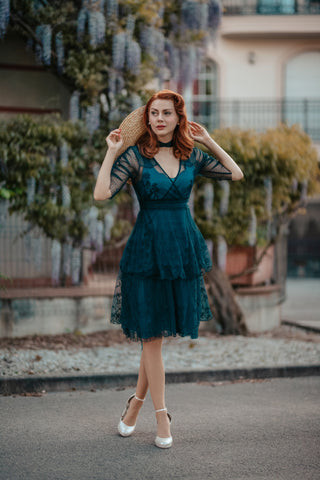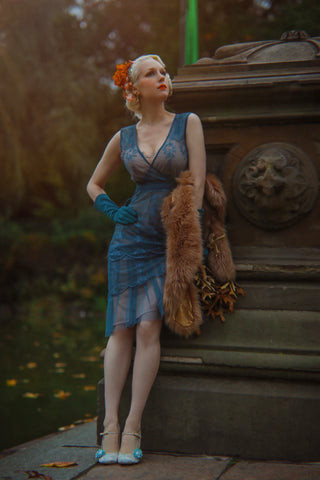In contemporary society, organized dance might be considered a niche interest. However, stepping back a century, dance in the 1920s was absolutely central to social life. Young people, defying societal norms, flocked to vibrant speakeasies and bustling dance halls. These venues became melting pots for socializing, enjoying illicit drinks, smoking cigarettes, and, most importantly, dancing to the energetic rhythms of live music. This era, often perceived as scandalous at the time, was embraced by a generation of young women known as Flappers. They saw these activities as a liberating way to challenge conservative cultural expectations and, crucially, to have fun.
The 1920s witnessed the explosion of dance crazes across the nation, with some styles considered more daring than others. This widespread passion for dance directly influenced the fashion of the decade. Flappers needed clothing and shoes that could keep pace with their dynamic movements on the dance floor. Let’s delve into the captivating world of dance in the 1920s, exploring the iconic dance styles and their profound impact on the roaring twenties fashion.
Iconic 1920s Dance Styles
The 1920s was a decade defined by rhythm and movement. Several dance styles captured the hearts and feet of the nation. Here are some of the most memorable:
The Charleston: The Quintessential 1920s Dance
The Charleston is undeniably the signature dance of the 1920s. Whenever the Roaring Twenties are depicted in popular culture, a rendition of the Charleston is almost guaranteed. Its appeal lay in its versatility – it could be danced solo or with a partner, making it a hit in the lively parties of the Jazz Age. Originating in the African-American dance halls of Harlem in the early 1920s, the Charleston’s infectious energy wasn’t fully unleashed until it reached Broadway. The 1923 Broadway hit “Running Wild” catapulted it into mainstream consciousness with a vibrant dance sequence set to James P Johnson’s upbeat 4/4 tune, aptly named “The Charleston.” Almost overnight, it became a national craze, embraced by flappers and their male counterparts alike.
The dance itself is characterized by its spirited movements: feet twisting, legs kicking, and arms swinging in syncopation. Typically performed to exhilarating jazz music, echoing its namesake song, the Charleston embodies the exuberance of the era. Its fast-paced and improvisational nature perfectly mirrored the changing social landscape of the 1920s.
 Flapper dancer in a 1920s dress demonstrating the Charleston dance steps
Flapper dancer in a 1920s dress demonstrating the Charleston dance steps
The Fox Trot: Elegant Partner Dancing in the Jazz Age
No discussion of popular 1920s dance styles is complete without mentioning the Fox Trot. This graceful dance emerged in the mid-1910s and maintained its popularity throughout the 1920s and 1930s. Its influence even extended into the dance trends of the 1940s and 1950s, with some even suggesting that the 1970s disco craze “The Hustle” owes a debt to the Fox Trot.
The Fox Trot’s origins trace back to 1914 when dancer Harry Fox was engaged to perform a vaudeville act on a prominent New York City stage. He and his “American Beauties” captivated audiences with trotting steps set to ragtime music. This captivating dance was widely imitated, first becoming known as “Fox’s Trot” and eventually simply “The Fox Trot.” At its core, the Fox Trot is a smooth and flowing partner dance that combines forward and sideways steps, all performed to music in 4/4 time. Its elegance and adaptability made it a mainstay in ballrooms and dance halls throughout the decade.
The Texas Tommy: A Precursor to Swing Dance
The Texas Tommy holds the distinction of being considered the first swing dance to gain popularity in dance halls. Its roots are in San Francisco around 1910, where it thrived in African American dance venues. However, it wasn’t until it was performed at the Fairmont Hotel, a more “respectable” establishment catering to white audiences, that it broke into mainstream popularity.
Popular dancer Ethel Williams played a crucial role in the Texas Tommy’s wider recognition. After performing it in San Francisco, she brought the dance movements back to New York City. There, it was adapted for the stage and featured in the renowned Broadway production “Ziegfeld Follies.” The Texas Tommy is significant as it paved the way for the “Lindy Hop” of the 1930s and fueled the swing dance craze of the 1940s. Contemporary critics described the Texas Tommy as “acrobatic,” “eccentric,” and a “whirling couples dance.” It was revolutionary for being the first popular dance to incorporate a breakaway step and an 8-count rhythm, elements that would become central to swing dancing.
 Flapper dresses for the Roaring 20s era
Flapper dresses for the Roaring 20s era
The Black Bottom: A Dance with Instructions
Like many dances of the 1920s, the Black Bottom originated in African American dance halls. While its origins are traced back to New Orleans in the early 1900s, its name is linked to an area of Detroit known as “Black Bottom.” The dance was already a favorite within African American communities in the South when, in 1924, it journeyed to Harlem. It was subsequently performed in a Broadway musical revue by Ann Pennington and Tom Patricola, igniting a sensation. The Black Bottom quickly rivaled and even surpassed “The Charleston” in popularity among the general public.
Uniquely, the Black Bottom even came with written instructions, reflecting its widespread appeal and the desire to learn it. The instructions read: “Hop down front then doodle back / Mooch to your left then mooch to the right / Hands on your hips and do the mess around / Break a leg until you’re near the ground.” While the slang terms might seem obscure today, they were part of the 1920s vernacular, used to spread the word and steps of this incredibly popular dance craze.
The Shimmy: Scandalous Shakes of the Jazz Age
While all forms of dancing in the 1920s were considered somewhat daring, the Shimmy was perceived as the most provocative. By modern standards, this dance appears remarkably tame. However, considering the recent Victorian era with its emphasis on chastity and modesty, it’s understandable why the Shimmy was often banned from dance halls during the 1920s.
The Shimmy’s roots are found in dances like the “Haitian Voodoo” and the Native American “Shim-Me-Sha-Wabble.” It gained national recognition thanks to Gilda Gray, a dancer of Polish descent. When questioned about her novel dance, she reportedly quipped, “I’m just shaking my chemise.” Her Polish accent apparently made “chemise” sound like “shimmy.” While an amusing anecdote, its veracity is debated. Actress Mae West also claimed to have coined the name after witnessing the dance in African American clubs. Regardless of its name’s origin, the Shimmy caused a sensation. The movements involve keeping the lower body relatively still while rapidly shaking the chest and shoulders back and forth. This seemingly simple yet suggestive movement was enough to shock and thrill audiences of the 1920s.
The Brazilian Samba: International Rhythms in Dance Halls
As its name suggests, the Brazilian Samba originated in South America in the late 1800s. This vibrant dance style was a highlight of events like Carnival before traveling to North America in the early 1900s. Early samba music was often performed by lesser-known musicians, but in 1917, a song titled “”Pelo Telefone”” by a celebrated Brazilian musician was recorded and gained popularity through radio broadcasts. This breakthrough paved the way for other Brazilian musicians and helped introduce these exciting sounds to a wider audience.
While the Samba was most deeply rooted in Brazil, it successfully crossed international borders. In the early 1920s, it took Paris by storm and became a sensation. The Samba’s sensual dance steps soon found favor in North American dance halls. Moreover, this musical style profoundly influenced later genres like Blues and Bossa Nova, demonstrating the lasting impact of 1920s dance trends on music history.
How Dance Fads Revolutionized 1920s Fashion
Flappers are renowned for challenging societal conventions. Beyond embracing “scandalous” behaviors like drinking and smoking, they revolutionized women’s fashion with shorter hairstyles and clothing that forever altered how women dressed. Remarkably, their passion for dance halls was a major catalyst for fashion trends during this transformative decade.
Practicality became paramount when it came to dance attire. Restrictive corsets, synonymous with previous eras, were utterly impractical for the energetic dance styles of the 1920s. Women needed freedom of movement and breathability, rendering constricting dresses and undergarments obsolete. Some dance halls even provided “Corset Check Rooms” where women could shed their corsets before hitting the dance floor.
Flapper’s short skirts weren’t merely a rebellious statement aimed at shocking older generations; they were essential for the energetic movements of dances like the Charleston, the Black Bottom, and the Fox Trot. This is a primary reason why shorter dresses became so fashionable in the 1920s. They offered comfort, modernity, and crucially, allowed young women to showcase their intricate footwork. Details like handkerchief hemlines and dazzling embellishments further accentuated the beauty of every dance move.
Appropriate footwear was equally crucial for a night of dancing and socializing. The T-strap sandal emerged as a quintessential shoe of the Jazz Age. Traditional pumps and boots were simply too cumbersome for the lively dances of the 1920s. Shoes with extra straps, like T-straps and ankle straps, ensured that a flapper’s footwear stayed securely in place while kicking and swinging her feet across the dance floor. While T-strap or ankle-strap sandals are now considered primarily fashion accessories, their initial surge in popularity was directly linked to the practical needs of women who wanted to fully participate in the exhilarating dance crazes of the 1920s.

